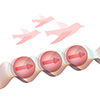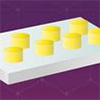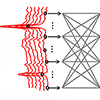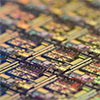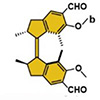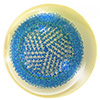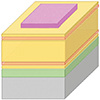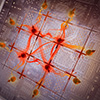Poison ivy
Poison ivy is an allergenic plant in the genus Toxicodendron native to Asia and North America. It is well known for causing urushiol-induced contact dermatitis, an itchy, irritating, and sometimes painful rash, in most people who touch it. The rash is caused by urushiol, a clear liquid compound in the plant's sap. The plant is variable in its appearance and habit, and despite its common name, it is not a true ivy (Hedera), but rather a member of the cashew and pistachio family (Anacardiaceae). T. radicans is commonly eaten by many animals, and the seeds are consumed by birds, but poison ivy is most often thought of as an unwelcome weed. Poison ivy was formerly treated as a single species, Toxicodendron radicans, but is now generally treated as a complex of three separate species: Toxicodendron radicans (eastern poison ivy), Toxicodendron rydbergii (western poison ivy) and Toxicodendron orientale (Asian poison ivy).
Check out these latest Nanowerk News:

